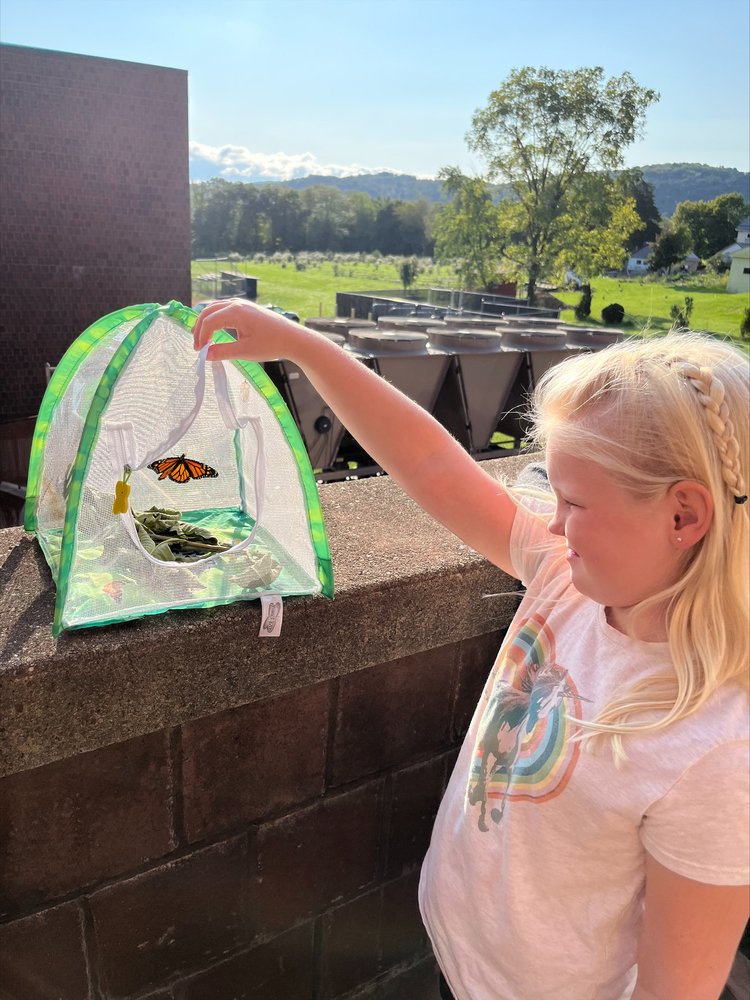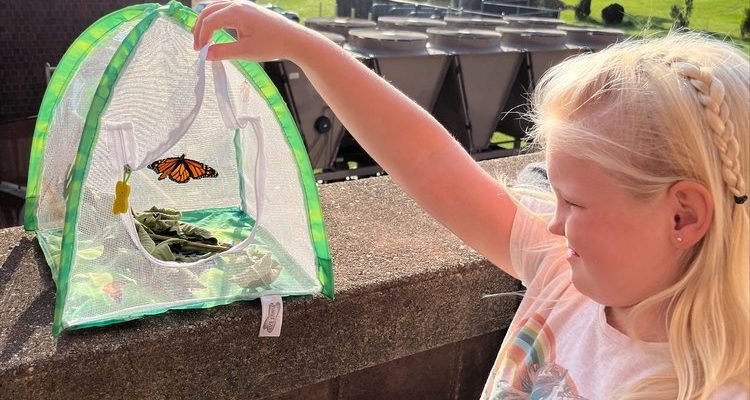
Imagine sitting in class, and instead of just reading about life cycles, you’re witnessing it first-hand. Inchworms are not only cool to look at; they’re also a gateway to understanding complex biological processes. It’s almost like reading an exciting story where each chapter reveals new surprises. You might be wondering how to set up this classroom observation, and I’m here to guide you through it step by step.
What Are Inchworms and Their Life Cycle?
Inchworms are the larval stage of certain moths, most commonly belonging to the Geometridae family. You might know them by their unique way of moving—like they’re inching along with a sort of “looping” motion. This crawling style is a neat adaptation that helps them blend in with their surroundings, avoiding predators. They are generally green or brown, making them hard to spot on the leaves where they live.
Now, let’s break down their life cycle. Inchworms start as eggs, which are usually laid on the underside of leaves. After hatching, they begin their life as tiny larvae that munch on leaves, growing bigger with each meal. This growth phase is crucial because it allows them to gather enough energy for the big change that’s coming—metamorphosis. Eventually, they spin themselves into a cocoon, where the real magic happens. Inside, they transform into moths, ready to start the cycle anew.
Understanding this life cycle allows students to appreciate the incredible journey these creatures take. It also sets the stage for hands-on activities that can make learning feel more dynamic and less abstract.
Why Observe Inchworms in the Classroom?
Observing inchworms’ metamorphosis in the classroom is not just a fun activity—it’s also a powerful educational tool. First off, it captivates students’ attention. Watching these little critters change over time can spark questions about biology, ecology, and even conservation. It brings subjects like science and nature into a relatable context that students can easily grasp.
Additionally, this observation aligns with hands-on learning, which is increasingly recognized as one of the most effective teaching methods. When students are actively engaged in the learning process, they’re more likely to retain information. Observing inchworms firsthand encourages students to ask questions and discuss their observations, fostering a sense of curiosity and teamwork.
Moreover, it can serve as an excellent opportunity to teach about responsibility. Caring for live creatures requires commitment and understanding of their needs. Students can take turns looking after the inchworms, learning to respect and nurture life in a tangible way.
How to Set Up Your Classroom Observation
Setting up for inchworm observation isn’t as daunting as it might sound. Here’s a simple guide to get you started:
1. Gather Materials: You’ll need a clear container that has air holes, some leaves (the inchworms’ food), and a notepad for observations. A simple glass jar can work great!
2. Find Inchworms: You can search for inchworms in your garden, park, or nearby greenspaces. They often hide on the underside of leaves, so be sure to look closely!
3. Create an Ideal Environment: Place the inchworms in the container with fresh leaves. Make sure the container is kept in a cool, shady spot, away from direct sunlight.
4. Observation Schedule: Set a regular schedule for students to observe the inchworms. Daily or every few days works well. Encourage them to note any changes they see—like size or behavior—over time.
5. Document the Journey: Students can keep a journal of their observations. This not only helps with their writing skills but also deepens their understanding of the life cycle.
This set-up not only invites curiosity but cultivates a sense of achievement as students see their inchworms grow and change.
What to Expect During the Metamorphosis
As your students observe the inchworms, they’ll witness several stages of metamorphosis that are nothing short of fascinating. At first, they’ll see the inchworms munching on leaves, growing larger each day. This growth phase is crucial because it prepares them for the transformation ahead.
After enough time has passed—and depending on the species—students will eventually notice the inchworms becoming more restless. They often wander off in search of a suitable spot to hang and spin their cocoons. This is a thrilling part of the process, as students can actively engage with the inchworms’ behaviors.
Once cocooned, the real transformation begins. This stage can take several days to weeks, depending on environmental factors. Here’s where patience comes in. Encourage your students to check on their inchworms daily and document any noticeable changes. When the time comes for the inchworms to emerge as moths, the excitement will be palpable—it’s the climax of their metamorphic adventure.
Lessons Beyond Biology
Observing inchworm metamorphosis isn’t just about biology; it’s a multi-faceted teaching moment that can tie into various subjects.
1. Math Skills: Students can measure the inchworms and track their growth over time. Graphing this growth can teach them how to interpret data visually.
2. Art Projects: Encourage students to create artwork inspired by the inchworms. They could illustrate different stages of metamorphosis or even design their own imaginary insects!
3. Writing Assignments: After documenting their observations, students can write a narrative or create a comic strip about their inchworm’s journey. This merges science with storytelling, making the learning experience richer.
4. Environmental Awareness: Discuss the role of inchworms in the ecosystem. They not only help control plant growth but also serve as food for various predators. This can lead to a deeper conversation about biodiversity and conservation.
These lessons help solidify the concept that everything in nature is interconnected. By observing inchworms, students learn more than just a life cycle; they gain insights into the complexities of life itself.
Common Challenges and Solutions
Like any classroom project, observing inchworms has its challenges. Here are a few common issues and how to handle them:
– Inchworms Not Eating: Sometimes, inchworms might not eat their leaves. Ensure that you provide fresh leaves daily and check that they are the right species they prefer.
– Temperature Problems: If the inchworms seem lethargic, it could be too hot or too cold. Ideal temperatures are important. Keep them in a stable environment away from drafty windows or direct sunshine.
– Cocooning Issues: Occasionally, inchworms might not cocoon properly. This can happen if they feel stressed or if there isn’t enough space. Ensure they have adequate room and a safe place to hang.
– Classroom Excitement Levels: The wait for metamorphosis might test the patience of some students. To keep their interest alive, have discussions about insect biology or share videos about other metamorphosis examples. This way, they stay engaged while waiting for their inchworms to transform.
By anticipating and addressing these challenges, you promote a smoother, more enjoyable observation experience.
Observing inchworm metamorphosis in the classroom offers a unique opportunity to engage students with nature and science in a very hands-on way. It invites them into a world of wonder, sparking curiosity and inspiring learning that goes beyond the text in their textbooks. You’re not just teaching them about life cycles; you’re nurturing a sense of responsibility, inquiry, and appreciation for the natural world.
So if you’re looking for a way to enliven your lessons and make science come alive, consider setting up an inchworm observation. With a little preparation and excitement, you can turn your classroom into a hub of learning and discovery—a place where students can thrive as they watch nature’s magic unfold before their very eyes.

